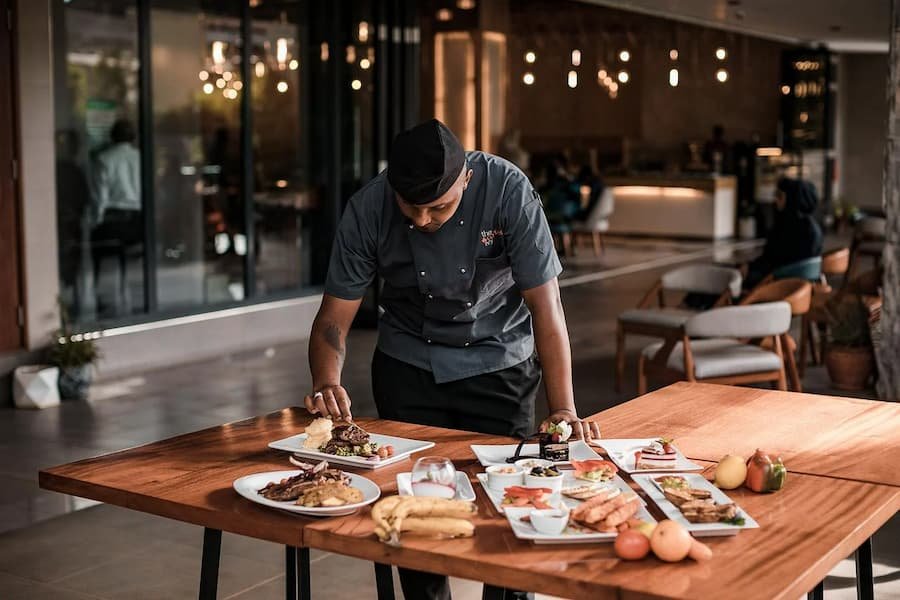It’s amazing that what seems like a tiny change to an area can actually have a knock-on effect that alters the entire fabric of a neighborhood. Though the word gentrification often has negative connotations, it would be fair to say that anyone who lives in a rundown part of any city would never, in theory, have an issue with an improvement in their locality.
Sadly moves to gentrify can often lead to the local residents being priced out and moved on; in general terms, a thriving neighborhood can never be seen, in and of itself, as a bad thing, and sometimes such a change can be down to just a single restaurant.
If we avoid the use of detrimental terms like gentrification and instead consider the positive benefits to a local area (with those benefits being for the current residents as well as those who may not potentially move into the area), the idea that a neighborhood may become more palatable to live in will clearly never be a bad thing.
Table of Contents
Rundown Neighborhoods
Often areas are rundown because of a lack of funding, either from local municipalities or private investment. This can lead to the general quality of life suffering. Often it means those in the area simply use the area as a commuter area; in other words, they may live in the local area, but they travel out of town to work.
This might also be sparked by a major employer in the area closing down and, as a result leaving a large percentage of unemployed locals, which in turn could lead to a downturn in the entire area.
A Change In Scenery
Often it takes just one successful business venture to start the ball rolling. That might be a stylish upscale restaurant with sparkling design and effortlessly hip restaurant chairs that gets your neighborhood’s groove back on.
And what if that new eatery is a community-driven project? This will be preferable to the successful restaurant being part of a chain or a high-end establishment that the locals can’t afford to eat in.
The point here is that if you have a vibrant location that people enjoy, locals and out-of-towners alike, then it can help to change the entire mood of an area. During the coronavirus pandemic, a large number of restaurants and bars struggled, and many closed, and this certainly has an effect on the mood of an area.
The hustle and bustle of a busy part of town, where people congregate and enjoy themselves, whilst importantly spending money to help drive the local economy, and is what helps to breathe life into areas that may previously have been struggling.
Domino Effect
So maybe this one restaurant, which is getting noticed and eliciting rave reviews from local and perhaps even the national press, might drive more and more people to the area. This can lead to the place in question being so busy that it can’t handle the demand; all of a sudden, opportunities arise for other businesses.
Perhaps this leads to more people staying out later and enjoying nearby pubs and clubs, further boosting the local economy and giving the area a more lively and energetic vibe, and helps to boost the frame of mind of the locals.
There is also an additional sense of pride that such improvements in an area can bring, and if that’s all started via a local project that is genuinely progressive and beneficial to the local area, then this is a win/win thing.
Downside of Globalization
The issue, when it comes to franchises that move into an area, is that businesses that are part of large organizations don’t tend to treat their employees all that well. Often salaries are lower, and there is a sense, rightly or wrongly, that their intentions are less honorable.
For instance, If locals open a restaurant that drives a neighborhood forwards, there will always be a feeling that the endeavor is one that benefits everyone in a way that is sustainable.
If the only businesses operating in a particular neighborhood are franchises, then the bottom line is king, and this isn’t conducive to the greater good. In other words, the profits that are accrued don’t go to benefit the local community.
Property Prices
So if a restaurant helps to drive change in an area, it is also likely to boost the value of house prices. There are, of course, upsides and downsides to these resultant byproducts. While it clearly benefits those in the area who own properties, it will also more than likely drive rent upwards and could lead to locals not being able to afford to continue to live in their neighborhood.
There are ways to mitigate this. Areas of affordable housing and rent control are two such ways, and one shouldn’t automatically consider increases in property prices as a downside as clearly, some locals will benefit if they have already got on the property ladder before the boom has hit.
Other Benefits
If an area becomes more desirable, there are other benefits that are likely to follow. Perhaps better transportation in the area or additional businesses moving into the town and driving employment for those who reside in the locality. All of this can start with one successful restaurant.

